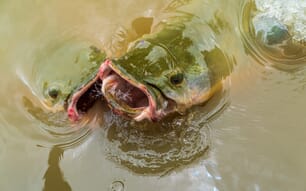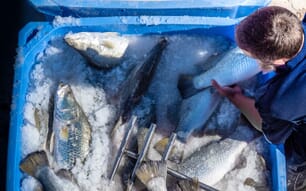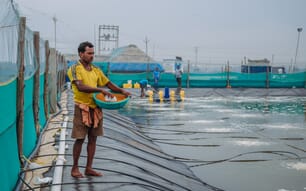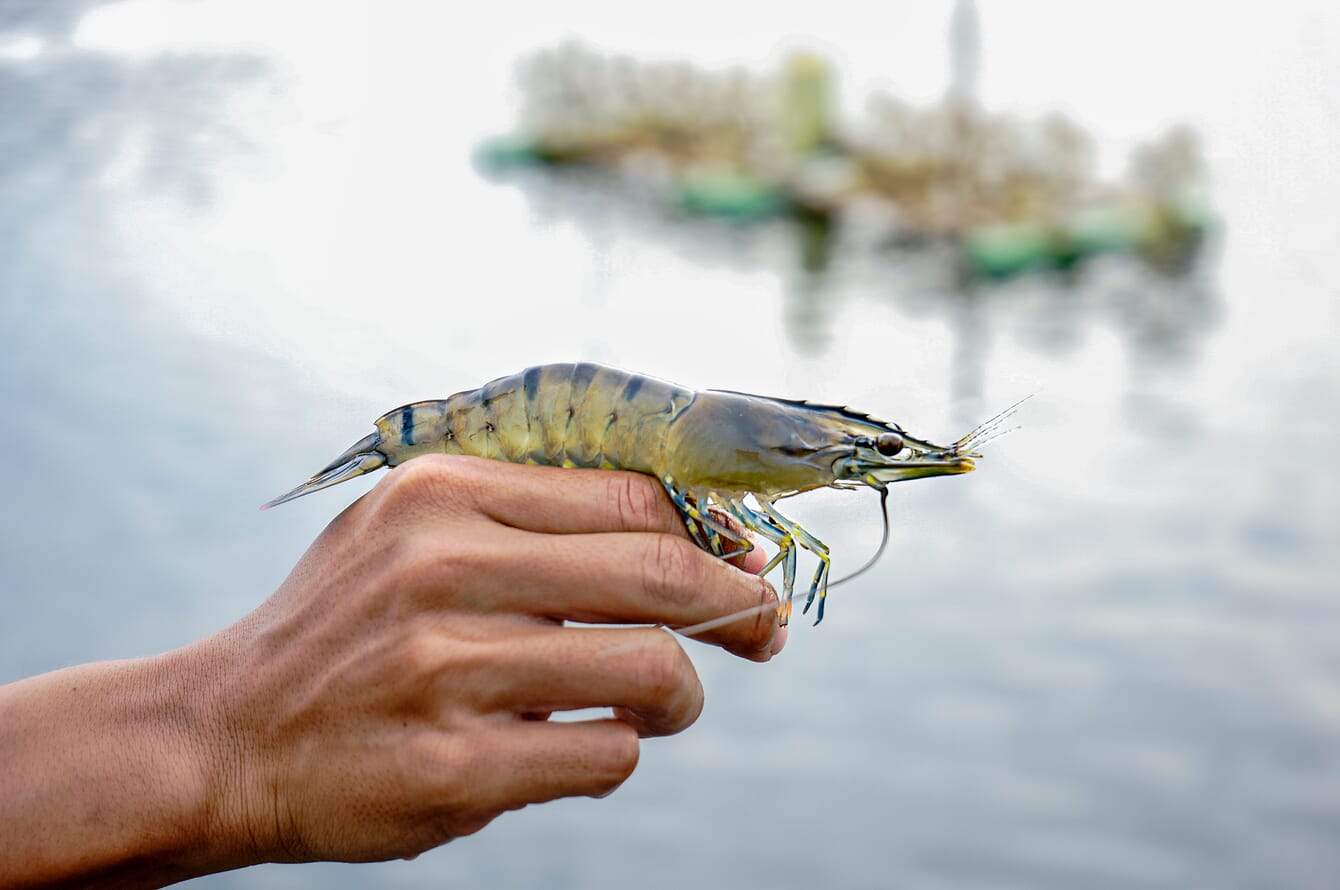
In the late 90s, harvests of black tiger shrimp (P. monodon) accounted for roughly half of global farmed shrimp production, but today it's been reduced to roughly 15 percent © Shutterstock
Penaeus monodon (also known as black tiger shrimp or giant tiger prawn) was one of the first shrimp species to be commercially farmed. Early trials in the 1970s and 1980s were conducted in a number of countries throughout Asia, and the species became an important component of commercial aquaculture across the Indo-Pacific region. From 1998 to 2003, monodon harvests accounted for roughly half of global farmed shrimp production. Subsequently, a combination of disease impacts, technical constraints and increased global production of Pacific white shrimp (P. vannamei*) have reduced that share to roughly 15 percent, a trend which appears to be continuing.
From boom to bust
Early production of monodon, in the 1970s and 1980s, relied on the collection of wild post-larvae (PLs). These were either actively collected by hand or naturally entered coastal impoundments at high tide. As interest in culture and demand for PLs grew, hatcheries began operating, initially using wild broodstock. Unilateral eyestalk ablation – the removal of one of each of the females’ eyestalks to improve spawning – was required. Sometimes this produced acceptable results in terms of ova and PL production. Often, however, these wild-caught females exhibited low spawning rates and problems with egg and larval quality.
It soon became apparent that, in many producing regions, wild broodstock were not available in adequate numbers, and what was available exhibited unreliable results. Efforts by researchers and commercial hatcheries progressed to apply ablation to captive-reared females. This was successful under research conditions, but it was a struggle to scale up for commercial PL production. Work with broodstock diets improved these results somewhat, but captive-reared females generally yielded lower PL production and survival. Hatcheries still preferred to use wild-caught females at this time because they could produce more larvae in a shorter period, and had simpler nutritional needs. Work on artificial diets for monodon hatcheries took off in the 1980s, addressing both broodstock and larval nutrition.
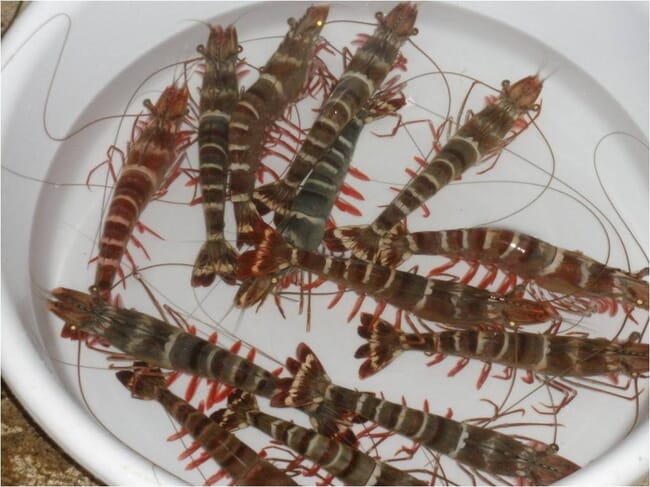
© Uniaqua Laboratory
A number of diseases proved problematic for monodon producers as the industry expanded. The most notable in the early years of production was monodon baculovirus, (MBV). This virus caused problems in a number of countries including Taiwan, Indonesia, Malaysia, the Philippines, French Polynesia, Hawaii and Singapore. MBV was continuously entering hatcheries via wild broodstock. Early research suggested P. monodon could tolerate the presence of the virus fairly well, but only under near-optimum conditions. When stressors were present, so were large numbers of MBV particles within the shrimp, often with significant subsequent mortality.
Dr Stephen Newman, a veteran in the industry and shrimp health specialist, offered his perspective on this issue.
“The advent of specific pathogen-free (SPF) P. vannamei was the pivotal point in shifting the production to the white shrimp. Wild P. monodon, the source of broodstock, carried several obligate pathogens with them that often resulted in large losses from disease. The ability to produce P. vannamei broodstock bred under controlled conditions allowed them to be ‘cleansed’ of specific pathogens. This does not mean that they were free of all pathogens or that they were less susceptible to these pathogens, only that the PLs, when produced in a biosecure manner, are not carrying the specific pathogens of interest into production systems,” he explained.
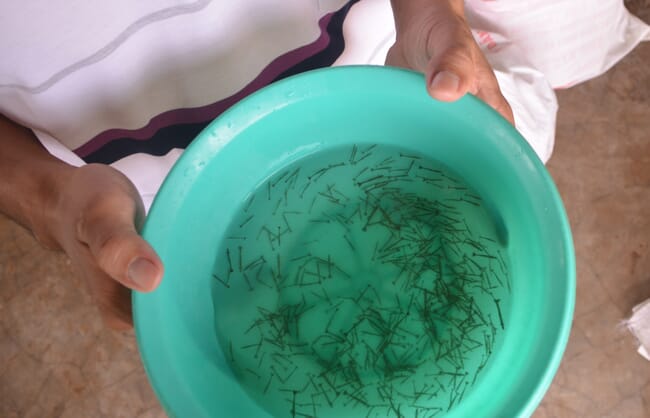
The Southeast Asian Fisheries Development Center recently initiated a programme aimed at supplying farmers with high-quality P. monodon PLs in an effort to revive production in the Philippines © Dr Stephen Newman
Monodon hatcheries also experienced serious issues with Vibrio bacteria and white spot syndrome virus (WSSV). Hatcheries that screened wild broodstock and discarded WSSV-infected animals were able to maintain lower WSSV loads among PLs, while Vibrio management relied on standard protocols of water treatment and disinfection that are widely used today in shrimp hatcheries. In the early 2000s, however, monodon slow growth syndrome emerged. Thailand was hit particularly hard, where declines in monodon production ranged from 40 to 70 percent over a two year period. This syndrome is associated with a pathogen known as Laem-Singh virus, but other factors appear to be involved as well.
Dr Victor Suresh, one of the world’s preeminent shrimp experts, shared his observations and experiences with me in order to explain the decline of monodon production throughout Asia, and these views largely concur with those expressed by Dr Newman.
“Farmers growing monodon were struggling with various disease problems from the early 2000s onwards. Domestication of monodon had limited success. Using ocean-caught monodon as broodstock meant that the disease cycle could not be controlled. Ponds were stocked with post-larvae infected with viral pathogens and, even if they were stocked with clean post-larvae, the pathogens were lurking in the water supply canal or a neighbour's pond. The infections would result in mass mortalities or stunted growth, uneconomical feed conversion ratios, and shrimp that were highly variable in size,” he explained.
“Once Asian countries started using the domesticated specific pathogen-free (SPF) post-larvae of vannamei imported from the United States, they discovered that the animals grew well, with a greatly reduced risk of survival loss due to pathogens. An added bonus was that vannamei could be stocked at densities much higher than those of monodon (60-100/m2 versus 15-20/m2), so the pond productivity and profitability increased multifold for the farmers. This resulted in vannamei replacing monodon as the species of choice in 80-90 percent of the farms in Asia,” he added.

With the availability of SPF and genetically improved lines of P. monodon available, some producers are moving back to cultivating P. monodon as the market for P. vannamei is saturated © CSIRO
Making a comeback?
While P. monodon may never regain its prior status in global shrimp trade, it will continue to be an important aquaculture species.
As Dr Newman noted: “Some [producers] are moving back to P. monodon as the market for P. vannamei is saturated and there are now SPF and genetically improved lines of P. monodon available. This minimises the issues with disease carry over into farms. P. monodon require higher protein levels in their feed, typically animal protein, resulting in higher costs of production than P. vannamei. Today there are large areas in Indonesia where P. monodon are being farmed at very low densities (extensively). These densities require little if any added feed and keep the cost of production low. Africa is also exploring this approach and there are ready markets available in the EU.”
“Southeast Asia has largely moved to a high-density production paradigm that requires large investments of capital and has resulted in higher debt loads that cannot be paid off, largely because of diseases due to poor biosecurity and inadequate regulatory oversight. They are not able to compete against Ecuador’s production paradigm, which produces P. vannamei at lower costs. Some will move back to farming P. monodon using SPF and genetically improved animals. There are, however, inherent limitations to this. Growing P. monodon at high densities to reduce overall costs per animal is one of the challenges, as they tend to be more aggressive and don’t generally do well under these conditions. More than likely monodon will remain a specialty market, with the white shrimp being the species that is farmed preferably,” he added.
Fresh impetus
A number of ongoing initiatives will probably contribute to the persistence, and perhaps expansion, of monodon farming. The Southeast Asian Fisheries Development Center recently initiated a programme aimed at supplying farmers with high-quality P. monodon PLs in an effort to revive production in the Philippines. Most of the infrastructure and supply- and value-chains are in place to support such an industry recovery. Polyculture of black tiger shrimp with mud crab and seaweed is proving profitable in Vietnam, as well as in warmwater integrated multi-trophic aquaculture (IMTA) systems with milkfish, yellow clams and halophytic plants in India.
Nutritional advances aimed specifically at the species also promise to reduce feed costs, as well as mortality rates in monodon PLs. The benefits of these approaches, however, will be more easily attained in some countries than in others. Some genetic improvement of captive monodon stocks has already been accomplished in the private sector. And, although applications for targeted genetic improvement in P. monodon are still a way off, researchers in Australia have begun the process of identifying key genetic markers through genomic datasets.
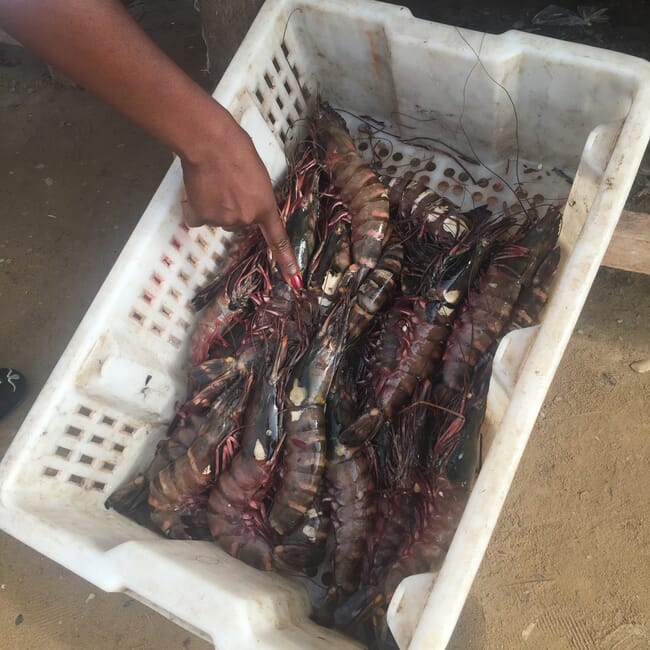
According to Dr Victor Suresh, the biggest opportunity for monodon production is to cater to the market that likes large shrimp, as monodon can reach 35-50 grams much faster than vannamei
Dr Suresh points out a number of factors that may define the future of monodon production in the coming years.
“The biggest opportunity is to cater to the market that likes large shrimp. Monodon can reach 35-50 grams, faster than vannamei. Monodon also provide the opportunity for species diversification and reduce the risk of the world being dependent only on vannamei. The recent comeback of monodon is due to the availability of domesticated monodon broodstock as specific pathogen-free animals. Unima from Madagascar, Moana from the US and CP in Thailand offer such broodstock. The post-larvae from these broodstock are performing better than wild-caught monodon broodstock and in some cases better than domesticated SPF vannamei broodstock,” he reflects.
However, there are still significant challenges for monodon aquaculture, according to Dr Suresh and many others.
“There are not enough SPF monodon suppliers and the present suppliers are limited in the number of broodstock they can produce. Successful reproduction of monodon in hatchery settings is not as easy as that of vannamei. Monodon should be grown to a larger size to be a broodstock. Handling the large size in long distance transport and getting the animals to mature remain as challenges. The post-larvae from SPF monodon perform well only in low stocking densities. The world market for large size shrimp is small,” he notes.
“So, monodon remains limited to a fraction of vannamei in terms of global production. Monodon farmers should focus on high value products like organic shrimp, or head-on shrimp to be profitable in their farming ventures,” Dr Suresh concludes.
*White shrimp were previously classified as Penaeus vannamei. But although they are more commonly referred to as Litopenaeus vannamei, Dr Newman asserts that the scientific consensus is once again that Penaeus is accurate.


